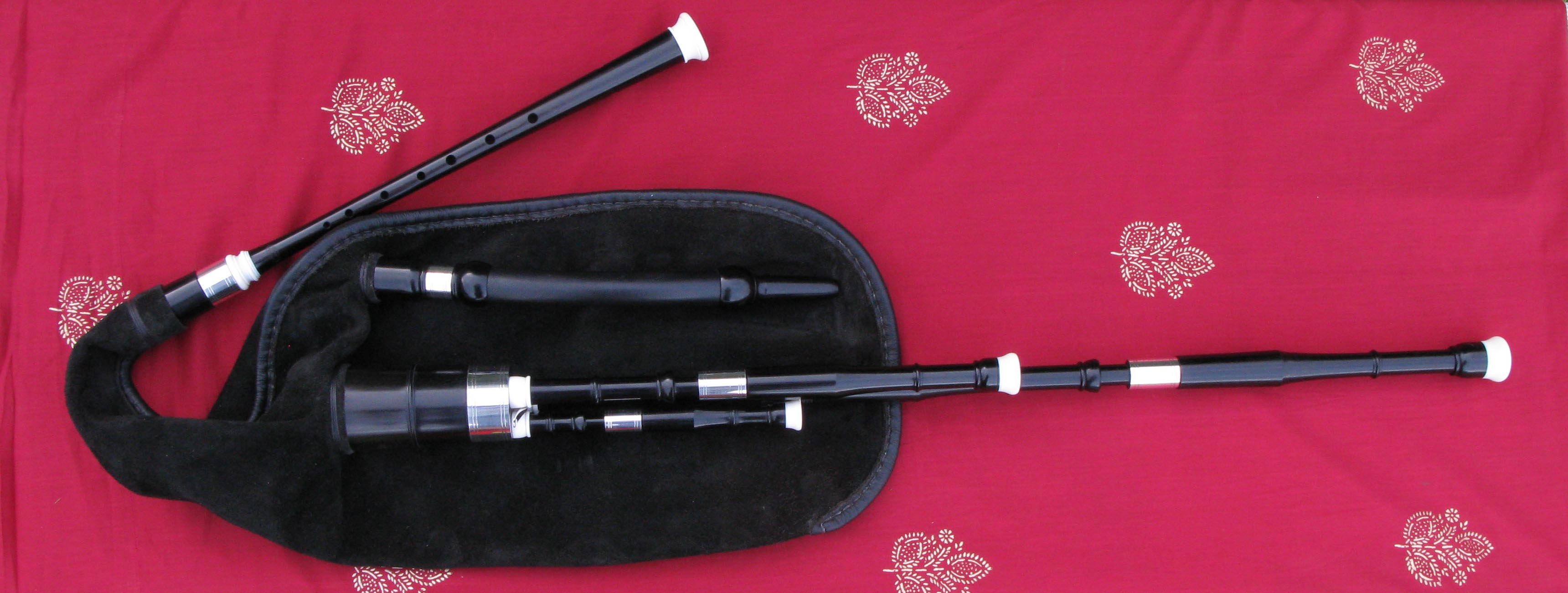The Bagpipe Society
Guide to the Lowland and Border Pipes

Played in the North of England and the Lowlands of Scotland from the seventeenth to the nineteenth centuries, Border Pipes are currently undergoing a renaissance.
Quiet enough to play alongside other acoustic instruments but maintaining the characteristic skirl of the Great Highland Bagpipe (GHB), Border pipes are typically in A, are bellows-blown, have three drones set in a common stock which lie across the chest, have a nine note scale, and usually employ GHB fingering. There is no formalised gracing style but the nature of the instrument lends itself to GHB ornamentation.
Repertoire is drawn from Scottish and Northumbrian sources, not least the 1733 William Dixon manuscript, the earliest surviving collection of bagpipe tunes in the UK. Younger players are discovering the chromatic possibilities of the instrument.

- Data Processing Notice (GDPR)
-
@BagpipeSociety on X (formally known as Twitter)
-
TheBagpipeSociety on Instagram
-
 BagpipeSociety on Facebook
BagpipeSociety on Facebook
Something wrong or missing from this page? Let us know!
